Evolution in global value chains key for green and resilient ASEAN
 |
| Ramesh Subramaniam - Director general Southeast Asia Department Asian Development Bank (left) and James Villafuerte - Principal economist Southeast Asia Department Asian Development Bank |
But we cannot view ASEAN’s relative strength in the past three years as a reason for complacency. The pandemic and other shocks like the conflict in Ukraine, geopolitical tensions, and climate change exposed weaknesses in ASEAN’s global value chains (GVCs). Ignoring these risks could reduce the immense benefits ASEAN has gained from global trade and the resilience it continues to build.
Historically, ASEAN has always ridden out crises with an appropriate mix of good policy and market reforms, increasing external trade, and foreign direct investment. GVC links – the cross-border production networks that bring a product or service from conception to market – expanded and deepened as multinational corporations and offshore suppliers flocked to the region’s manufacturing and assembly base, with its young and vibrant workers and better access to technology, knowledge, and innovation.
In fact, Southeast Asia’s GVC links weathered the pandemic better than expected. Agile businesses quickly shifted from just-in-time to just-in-case inventories and diversified suppliers and delivery routes. For example, many manufacturers in the region repurposed their plants to produce personal protective equipment and disinfectants to respond to their rising demand.
By 2021, GVC participation in the region had rebounded, topping 2019 levels. Machinery chains surged, followed by medium- and high-tech manufacturing and the business services most integrated into them. Government stimulus helped, along with easing mobility restrictions, strong consumer demand, surging e-commerce, and increased trade with China, South Korea, and Japan.
Jobs also played a strong role. More than one in four Southeast Asia jobs are linked to GVCs. In 2021, 76 million workers in nine Southeast Asia economies held GVC-related jobs, seven million more than in 2020. Many cite GVCs as a major factor driving the region’s 2021 recovery.
However, the pandemic response also altered the region’s competitive advantage based on cheap labour. This bedrock of GVC production needs to evolve to include the new skills needed in an increasingly technology-driven and environmentally sensitive world.
During the pandemic, consumers and businesses scrambled to overcome restrictions by adopting digital technologies and e-commerce. And these accelerated shifts will continue to transform GVC production and marketing. Reforms must therefore be paired with creativity, soft skills, and new business models, especially digitalisation. ASEAN needs to transform itself into a technology and knowledge hub.
It can only do this, however, if it creates a workforce with the right skill set. Governments urgently need comprehensive innovation and training policies. These should balance smart regulation, high-quality digital infrastructure, green growth, and investment across a broad range of skills development to allow workers to shift to higher value-added GVC jobs.
Another challenge is to ensure the recovery and future growth is green. GVCs must adapt and adjust to ensure they are environmentally sustainable. As a global factory for the world, more trade and deeper GVCs mean greater emissions and environmental damage. The region emits more greenhouse gases during production than most similar-sized regions.
Authorities need to consider climate goals in every policy, plan, and project. Investments in renewable energy and improved efficiency in linking power to consumption should be mandatory. Value chains should be simplified and shortened to promote economic, social, and environmental objectives.
Effective incentives are needed to eliminate fossil fuel subsidies, set realistic carbon prices, plug carbon leakage, stamp energy labels on imported goods, and reduce trading costs for climate-smart and environment-friendly goods. Reforms are also needed to promote the application of digital technology in trade and transport systems to mitigate their carbon footprints.
Geopolitical tensions are drastically changing the type and tone of trade and investment policies among major trading partners. Regrettably, support for a more open, rules-based system has suffered. All these could unleash changes that disrupt Southeast Asia’s GVC links and progress.
To counter this new wave of challenges, ASEAN GVCs should evolve to become more green, enable firms to use greater technology, and train workers to shift to higher skills. It should better leverage intra-regional cooperation to seize new opportunities for regional and global integration. And it should keep borders open for trade – the only proven way to diversify and boost access to products, services, and business partners.
GVCs have helped ASEAN bring greater prosperity to its people. By embracing the right reforms, they will continue to do so.
| Upgrading Vietnam’s export-led growth model Vietnam’s successful export-led development model was built chiefly on the low-value-added manufacturing sector. This strategy led to steady foreign direct investment inflows that rose from $2.4 billion in 2000 to $20 billion disbursed investment by 2020, mostly in manufacturing exports. As a result, the share of the manufacturing sector in GDP (as measured by value addition) rose from 17 per cent in 2010 to 24 per cent in 2020. The share of employment in the industrial sector grew from 21.7 per cent in 2010 to 32.6 per cent in 2020. Reflecting this economic transformation, the share of manufacturing exports rose from 82 per cent in 2010 to 96 per cent in 2020, fuelled by both a population dividend and Vietnam’s integration into the global economy, including its membership in 15 active free trade agreements and various global value chains for garments, shoes, and electronics. However, after a solid run, the traditional drivers of growth – accumulation of physical capital, demographic dividend, and manufacturing expansion, mostly in labour-intensive low-valued added sectors – are gradually running out of steam. The government developed the Socioeconomic Development Strategy for 2021-2030, where growth would be driven by increased value addition from productivity gains powered by the digital revolution, more efficient and greener technology, and the use of new and existing assets and resources. Increasing value addition in the industrialisation process would entail more servicification of manufacturing, as well as further development of enabling services sectors, including logistics, transport, financial sector services, and strengthening education services to build the necessary skills in future workers. In Vietnam, enhancing the sustainability of growth in the medium to long term will depend on deep structural reforms. Regulatory reforms would improve the business environment and spur business formalisation and competition, which would lift productivity growth and help further develop the domestic private sector to respond to demand from a growing middle class. These reforms could ensure resources go to the most productive firms by reforming the insolvency framework. They can also include measures to improve productivity of firms through more and more inclusive access to finance. Source: World Bank and ILO data |
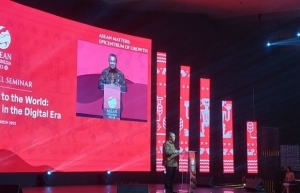 | Central banks in ASEAN discuss economic priorities The ASEAN Central Bank Deputies Meeting (ACDM) took place on March 28 in Indonesia to discuss the priority economic deliverables (PEDs) in 2023. |
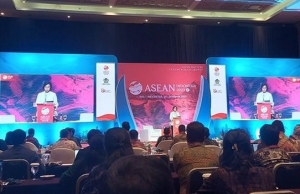 | ASEAN faces challenge in financial exclusion: Indonesian minister Indonesian Minister of Finance Sri Mulyani said on March 29 that financial exclusion remains a major challenge and also a crucial factor in ASEAN countries' economies, especially micro, small, and medium enterprises (MSMEs). |
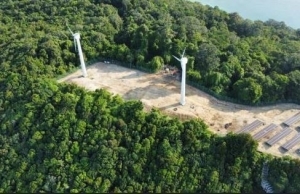 | ASEAN looks towards net zero emissions The Asian Development Bank (ADB) and ASEAN Catalytic Green Finance Facility jointly held the Southeast Asia Development Symposium themed “Imagining a net-zero ASEAN” in Indonesia’s Bali on March 30. |
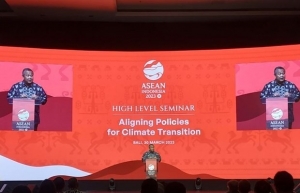 | High-level ASEAN seminar talks aligning policies for climate transition As part of the first ASEAN Finance Ministers and Central Bank Governors’ Meeting (AFMGM) 2023 in Bali on March 30, Indonesia organised a high-level seminar themed “Aligning Policies for Climate Transition” to support the message of sustainable development, one of the ASEAN priority economic deliverables (PED) this year. |
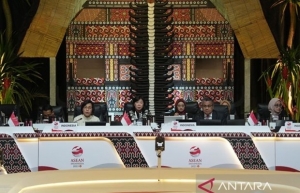 | ASEAN affirms its role as epicentrum of growth As part of the first ASEAN Finance Ministers and Central Bank Governors' Meeting (AFMGM) held from March 28-31 in Bali, the host country Indonesia organised AFMGMs with the ASEAN-US Business Council (ASEAN-US ABC), the EU-ASEAN Business Council (EU ABC), and the ASEAN Business Advisory Council (ASEAN ABAC) on March 29. |
What the stars mean:
★ Poor ★ ★ Promising ★★★ Good ★★★★ Very good ★★★★★ Exceptional
Related Contents
Latest News
More News
- Positive projections for M&A interest from Thailand (December 03, 2025 | 09:40)
- Manifesting the first line of defence in cybersecurity (December 03, 2025 | 09:00)
- The transformational role AI can play in accounting arena (December 03, 2025 | 08:00)
- Unlocking 5G-AI potential in Singapore (December 03, 2025 | 08:00)
- Data-driven strategies vital for a fast-evolving nation (December 02, 2025 | 09:41)
- Policy to practice: how Vietnam can lead the region (November 26, 2025 | 16:03)
- Mobilising private capital at scale vital for climate battle (November 26, 2025 | 15:36)
- VILAF and Yoon & Yang launch Vietnam - Korea Practice Unit (November 26, 2025 | 15:16)
- Trademark disputes challenge foreign firms in Vietnam (November 24, 2025 | 15:30)
- Rich IPO pipeline can catalyse strategic dealmaking (November 17, 2025 | 11:36)

 Tag:
Tag:






















 Mobile Version
Mobile Version